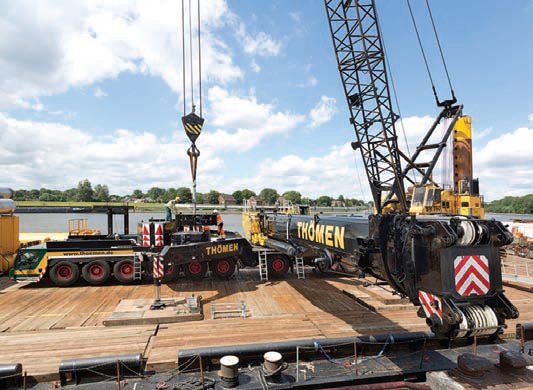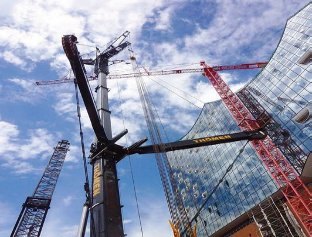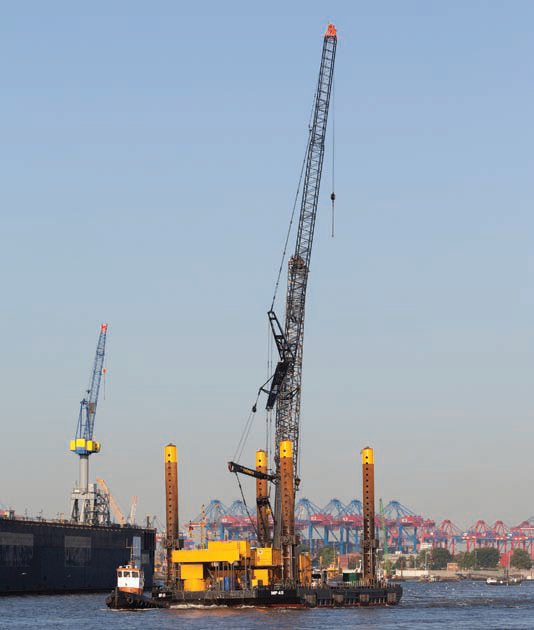Making Music
28 January 2016For the first time since 2007, the Elbe Philharmonic Hall in Hamburg can been viewed unobstructed by lifting equipment. To achieve this, heavy haulage contractor Thömen employed a Liebherr LTM 1750- 9.1 mobile crane in the final part of this construction jigsaw.
Viewed as a highlight of the Port of Hamburg, the Elbe Philharmonic Hall has been under construction since 2007. But now, for the first time in close to ten years, visitors can appreciate the building in the way it was first imagined.
To meet this goal, Hamburg-based crane and heavy haulage contractor Thömen leveraged a Liebherr LTM 1750-9.1 to dismantle the last of the four large top-slewing cranes that have long dominated the former quay warehouse.
Jörg Marahrens, project manager at Thömen was tasked with the challenge of removing the final construction crane from the Elbe Philharmonic Hall, a crane that had to be dismantled from the River Elbe.
This system was initially erected from a pontoon, despite the fact that the river in the Port of Hamburg is tidal. An LTM 1500-8.1 from Thömen was used to erect the tower crane, but dismantling work had to be completed by a more powerful mobile crane located on a fixed jack-up platform as the crane, directly attached to the building, was now around 120m high.
"It had been climbed downwards until the boom could just still be slewed over the edge of the building. A larger crane would be able to remove several tower sections from the crane on its hook with each hoist so that the work could be completed more quickly," says the manufacturer.
The Liebherr LTM 1750-9.1 was was erected and prepped for the job at Burchardkai, west of the Port of Hamburg, on a jack-up platform measuring 75m in length.
Thömen used 114t of ballast, a 19m telescopic boom extension and a 66m luffing jib to achieve the required hook height of 127m.
A Liebherr LHM 320 mobile harbour crane on the quay helped install the luffing jib. Two tugs towed the platform with the crane upstream through the Port of Hamburg for an hour to the site. Immediately in front of the Elbe Philharmonic Hall, the jack-up platform pushed its enormous legs into the river bed to raise the platform to the water level of the high tide. This meant that the crane work could be completed without any hindrance from the tides or the bow waves from passing shipping, the manufacturer explains.
Following removal of the ballast blocks and the boom, the wind speed increased, which resulted in the work having to be stopped for several days. Problems with undoing the tower crane bolts following seven years caused an "unexpected delay" in the removal of the crane. This meant that the timeframe with ideal weather conditions which should normally have sufficed for the work had to be extended significantly.
The Liebherr LTM 1750-9.1 mobile crane has now ended up as a favourite at Thömen, with three of the large modern cranes from the Ehingen Plant stationed at outlets in Leipzig and Potsdam and at the headquarters in Hamburg.
"These cranes are mainly used for erecting wind farms. Our first one went straight from Ehingen to wind power work and was then in use without a break for nine months until its first service. The crane is simply unbeatable for erecting wind turbines," explains Marc Bernschneider, a member of the external sales team at Thömen.


